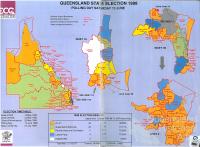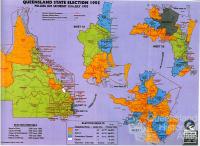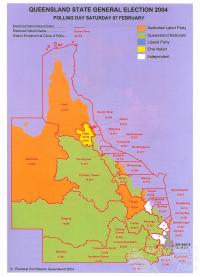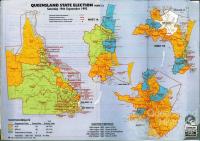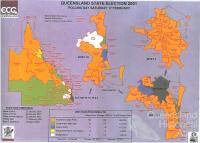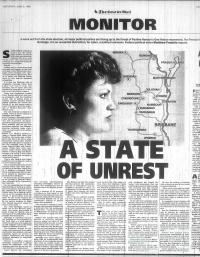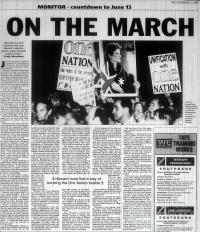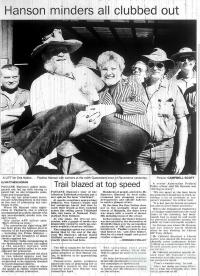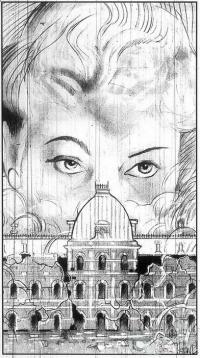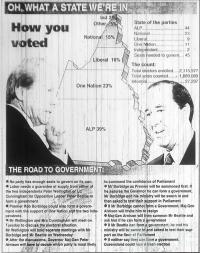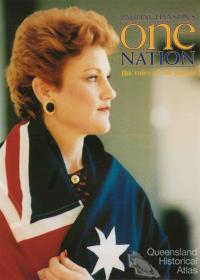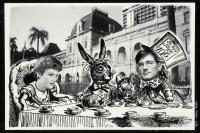- Home
- Quintessential Queensland
- Distinctiveness
- Perceptions
- Perceptions: how people understand the landscape
- From runs to closer settlement
- Geological survey of Queensland
- Mapping a new colony, 1860-80
- Mapping the Torres Strait: from TI to Magani Malu and Zenadh Kes
- Order in Paradise: a colonial gold field
- Queensland atlas, 1865
- Queensland mapping since 1900
- Queensland: the slogan state
- Rainforests of North Queensland
- Walkabout
- Queenslanders
- Queenslanders: people in the landscape
- Aboriginal heroes: episodes in the colonial landscape
- Australian South Sea Islanders
- Cane fields and solidarity in the multiethnic north
- Chinatowns
- Colonial immigration to Queensland
- Greek Cafés in the landscape of Queensland
- Hispanics and human rights in Queensland’s public spaces
- Italians in north Queensland
- Lebanese in rural Queensland
- Queensland clothing
- Queensland for ‘the best kind of population, primary producers’
- Too remote, too primitive and too expensive: Scandinavian settlers in colonial Queensland
- Distance
- Movement
- Movement: how people move through the landscape
- Air travel in Queensland
- Bicycling through Brisbane, 1896
- Cobb & Co
- Journey to Hayman Island, 1938
- Law and story-strings
- Mobile kids: children’s explorations of Cherbourg
- Movable heritage of North Queensland
- Passages to India: military linkages with Queensland
- The Queen in Queensland, 1954
- Transient Chinese in colonial Queensland
- Travelling times by rail
- Pathways
- Pathways: how things move through the landscape and where they are made
- Aboriginal dreaming paths and trading ways
- Chinese traders in the nineteenth century
- Introducing the cane toad
- Pituri bag
- Press and the media
- Radio in Queensland
- Red Cross Society and World War I in Queensland
- The telephone in Queensland
- Where did the trams go?
- ‘A little bit of love for me and a murder for my old man’: the Queensland Bush Book Club
- Movement
- Division
- Separation
- Separation: divisions in the landscape
- Asylums in the landscape
- Brisbane River
- Changing landscape of radicalism
- Civil government boundaries
- Convict Brisbane
- Dividing Queensland - Pauline Hanson’s One Nation Party
- High water mark: the shifting electoral landscape 2001-12
- Hospitals in the landscape
- Indigenous health
- Palm Island
- Secession movements
- Separate spheres: gender and dress codes
- Separating land, separating culture
- Stone walls do a prison make: law on the landscape
- The 1967 Referendum – the State comes together?
- Utopian communities
- Whiteness in the tropics
- Conflict
- Conflict: how people contest the landscape
- A tale of two elections – One Nation and political protest
- Battle of Brisbane – Australian masculinity under threat
- Dangerous spaces - youth politics in Brisbane, 1960s-70s
- Fortress Queensland 1942-45
- Grassy hills: colonial defence and coastal forts
- Great Shearers’ Strike of 1891
- Iwasaki project
- Johannes Bjelke-Petersen: straddling a barbed wire fence
- Mount Etna: Queensland's longest environmental conflict
- Native Police
- Skyrail Cairns (Research notes)
- Staunch but conservative – the trade union movement in Rockhampton
- The Chinese question
- Thomas Wentworth Wills and Cullin-la-ringo Station
- Separation
- Dreaming
- Imagination
- Imagination: how people have imagined Queensland
- Brisbane River and Moreton Bay: Thomas Welsby
- Changing views of the Glasshouse Mountains
- Imagining Queensland in film and television production
- Jacaranda
- Literary mapping of Brisbane in the 1990s
- Looking at Mount Coot-tha
- Mapping the Macqueen farm
- Mapping the mythic: Hugh Sawrey's ‘outback’
- People’s Republic of Woodford
- Poinsettia city: Brisbane’s flower
- The Pineapple Girl
- The writers of Tamborine Mountain
- Vance and Nettie Palmer
- Memory
- Memory: how people remember the landscape
- Anna Wickham: the memory of a moment
- Berajondo and Mill Point: remembering place and landscape
- Cemeteries in the landscape
- Landscapes of memory: Tjapukai Dance Theatre and Laura Festival
- Monuments and memory: T.J. Byrnes and T.J. Ryan
- Out where the dead towns lie
- Queensland in miniature: the Brisbane Exhibition
- Roadside ++++ memorials
- Shipwrecks as graves
- The Dame in the tropics: Nellie Melba
- Tinnenburra
- Vanished heritage
- War memorials
- Curiosity
- Curiosity: knowledge through the landscape
- A playground for science: Great Barrier Reef
- Duboisia hopwoodii: a colonial curiosity
- Great Artesian Basin: water from deeper down
- In search of Landsborough
- James Cook’s hundred days in Queensland
- Mutual curiosity – Aboriginal people and explorers
- Queensland Acclimatisation Society
- Queensland’s own sea monster: a curious tale of loss and regret
- St Lucia: degrees of landscape
- Townsville’s Mount St John Zoo
- Imagination
- Development
- Exploitation
- Transformation
- Transformation: how the landscape has changed and been modified
- Cultivation
- Empire and agribusiness: the Australian Mercantile Land and Finance Company
- Gold
- Kill, cure, or strangle: Atherton Tablelands
- National parks in Queensland
- Pastoralism 1860s–1915
- Prickly pear
- Repurchasing estates: the transformation of Durundur
- Soil
- Sugar
- Sunshine Coast
- The Brigalow
- Walter Reid Cultural Centre, Rockhampton: back again
- Survival
- Survival: how the landscape impacts on people
- Brisbane floods: 1893 to the summer of sorrow
- City of the Damned: how the media embraced the Brisbane floods
- Depression era
- Did Clem Jones save Brisbane from flood?
- Droughts and floods and rail
- Missions and reserves
- Queensland British Food Corporation
- Rockhampton’s great flood of 1918
- Station homesteads
- Tropical cyclones
- Wreck of the Quetta
- Pleasure
- Pleasure: how people enjoy the landscape
- Bushwalking in Queensland
- Cherbourg that’s my home: celebrating landscape through song
- Creating rural attractions
- Festivals
- Queer pleasure: masculinity, male homosexuality and public space
- Railway refreshment rooms
- Regional cinema
- Schoolies week: a festival of misrule
- The sporting landscape
- Visiting the Great Barrier Reef
By:
Chris Salisbury Following a surprise win in the formerly safe Labor seat of Oxley at the March 1996 federal election (where she attracted a nation-high swing to her of 19.3%), Pauline Hanson and her divisive views drew more approval and voter support (and at least as much criticism) from her Queensland base than from anywhere else in the country.
This endorsement applied to both Hanson personally and her One Nation Party, which she founded and then launched – along with new cohorts David Ettridge and David Oldfield – in March and April of 1997 respectively. Beforehand, she delivered a controversial rebuke to the political mainstream in her September 1996 maiden speech to parliament, that expanded on themes in an earlier letter to Ipswich’s Queensland Times, which led to her dis-endorsement by the federal Liberal Party. Her fringe views, however, apparently echoed the sentiments of a disaffected portion of the electorate, particularly in regional Queensland where rising unemployment and loss of services were attributed by many to unchecked globalisation and the economic rationalism of the major political parties – including the National Party, erstwhile defenders of those ‘in the bush’. In an atmosphere of regional decline and growing alienation from mainstream politics, Hanson's allusion to perceived perils of so-called ‘unchecked’ Asian immigration and ‘discriminatory’ government largesse to Aboriginal people provided ready-made scapegoats to those looking for someone or something to blame for their troubles.
Emasculated and marginalised
Such notions proved rich fodder for a vocal support movement that sprang up around the independent Member for Oxley, drawing its membership primarily from the Ipswich area of her electorate and the ‘retiree haven’ of Hervey Bay and surrounds. From the time of the party’s inception until its eventual decline, it was these and other regional centres across Queensland that provided the majority of Hanson’s supporters – in nearly every instance twice as many as was the case nationally. In pre-election polling, those who voiced support for One Nation tended mainly to be middle-aged, blue-collar (or no longer working) males of Anglo-Celtic background and with below average education levels. This profile is indicative of many inhabitants of inland/rural Queensland and of most sizeable centres up the length of the state’s coastline. It was to these and similarly-minded people that Hanson’s populist, rallying call to an ‘emasculated’ and ‘marginalised’ supposed mainstream appealed so strongly. It looked increasingly credible as the 1998 State poll approached that One Nation had invaded the National Party’s heartland, and furthermore might win over a significant slice of the Coalition’s voter share.
Altering the political landcsape
If 1996 was a repudiation of the Hawke-Keating era of greater ‘engagement’ with our Asian neighbours, then 1998 would become a trial for the governing conservative parties’ ability to placate an electorate evidently uneasy with the rapid pace of global economic change. It was this anxiety and a growing disdain for the slick machine of modern politics (as well as national mainstream media) that propelled first Pauline Hanson and then the One Nation Party to centre-stage in this election year. The first outlet for this voter discontent – and the first real test of One Nation’s electoral credentials – came at the Queensland general election on 13 June 1998. Even before the polling date, Hanson and her new party had altered the political landscape in the state and across the nation, by virtue of the ways in which the major parties dealt with this unexpected challenge to their political primacy.
It has been well documented how Prime Minister John Howard adopted a ‘softly, softly’ approach – initially, at least – to Hanson’s rise in popularity, whereas Labor under Kim Beazley (and Peter Beattie at the State level) voiced strident opposition to Hanson’s views and the policy platform of One Nation. Labor’s early decision to preference One Nation candidates last in the state election gave it something of a moral high-ground over its Coalition opponents, whose prevarication over this thorny preferencing issue left the incumbent Borbidge government at odds with federal colleagues and looking decidedly opportunistic.
Seismic shift
Despite predictions to the contrary, One Nation’s showing in the 1998 state election was quite astonishing and signified a seismic shift in the character of Queensland politics. At the first time of asking, the party captured nearly a quarter (22.7%) of the statewide primary vote and won 11 of the 79 seats it contested (out of a total of 89). Tellingly, One Nation assumed the mantle of third political force in the State, outpolling each of the Coalition parties (the Liberals attracting 16.1% of the primary vote, the Nationals 15.2%, from the 47 and 44 seats they contested respectively); its parliamentary representation even outnumbered the floundering Liberal Party – punished particularly hard in the State capital for its preference deals with One Nation – which could win only 9 seats (a loss of 6 seats and all to Labor, 4 of these in Brisbane electorates). As a debut performance, it was hard to top – in the normally consistent and almost predictable annals of Queensland’s electoral history, one would have to look back as far as 1957 to the infamous ‘ALP split’, where the new Queensland Labor Party won 11 seats with 23.4% of the vote as Frank Nicklin led the Country Party to victory.
But whereas the QLP drew its support from an already-established Labor-voting base, One Nation cleaved voters away from all of the major parties (although especially the Coalition) in fashioning an entirely new political entity with a supporter base as varied as it was fed up with the alternatives. Despite this hard-to-define nature, however, the party’s electoral support was evidently principally regional in character and determined to upstage the major players on the local political scene. That it did so while flying in the face of an equally vocal popular and media backlash, and by largely riding to victory in its 11 seats on the back of Coalition preferences, only added insult to injury for the shell-shocked major parties. Perhaps nowhere was this more the case than in the ‘blue ribbon’ National seat of Barambah, centred around the towns of Kingaroy and Nanango, where Joh Bjelke-Petersen had once been the sitting member for 40 years. Held safely by Trevor Perrett, a Minister in the Borbidge government (who had been elected to the seat as a Citizens Electoral Council candidate in 1988), the seat was won convincingly by One Nation’s Dorothy Pratt, who polled 43.5% of the primary vote – the best result for any One Nation candidate in the entire State. Ms Pratt represented her electorate so effectively that she has won the seat – renamed Nanango from 2001 – at every election since then (albeit as an Independent after resigning from the One Nation Party in February 1999).
It was a story repeated across the state, with a pattern emerging indicating that One Nation, while out of favour in Brisbane and the urban core of other major centres, was very much in favour nearly everywhere else. Besides Barambah, the party won Burdekin (with 33.1% of the primary vote), Caboolture (29.9%), Hervey Bay (33.8%), Ipswich West (38.6%), Lockyer (39.2%), Maryborough (42.6%), Mulgrave (31%), Tablelands (42%), Thuringowa (34.9%) and Whitsunday (30.7%). Six of these seats were prised from Labor’s grasp in outer metropolitan or urban/rural fringe districts, while five were won from the Nationals in typically rural areas. There were many near misses, too; in several contested seats the party attracted a sizeable primary vote – sometimes more than all other candidates. The highest profile of these was Ipswich, where the party’s state leader, Heather Hill, polled 39.5% but lost to Labor’s David Hamill on preferences. Similar results unfolded in the seats of Bundamba (34.3%), Burnett (36.4%), Callide (37.5%), Crow’s Nest (39.5%), Gympie (39.2%) and Western Downs (34.5%).
It is clear from these figures that One Nation’s electoral support had expanded outwards – spectacularly so – from its Ipswich origins. In the election wash-up, the party laid claim to a lengthy, almost unbroken stretch of coastal territory in far north Queensland reaching from north of Cairns to Mackay, and was a mere handful of votes away from encircling the south-east corner of the state. Also clear to the rest of the nation was that, with a federal poll due later in the same year, a potent, disruptive and (significantly) home-grown political force had seemingly remade the electoral map in Queensland.

